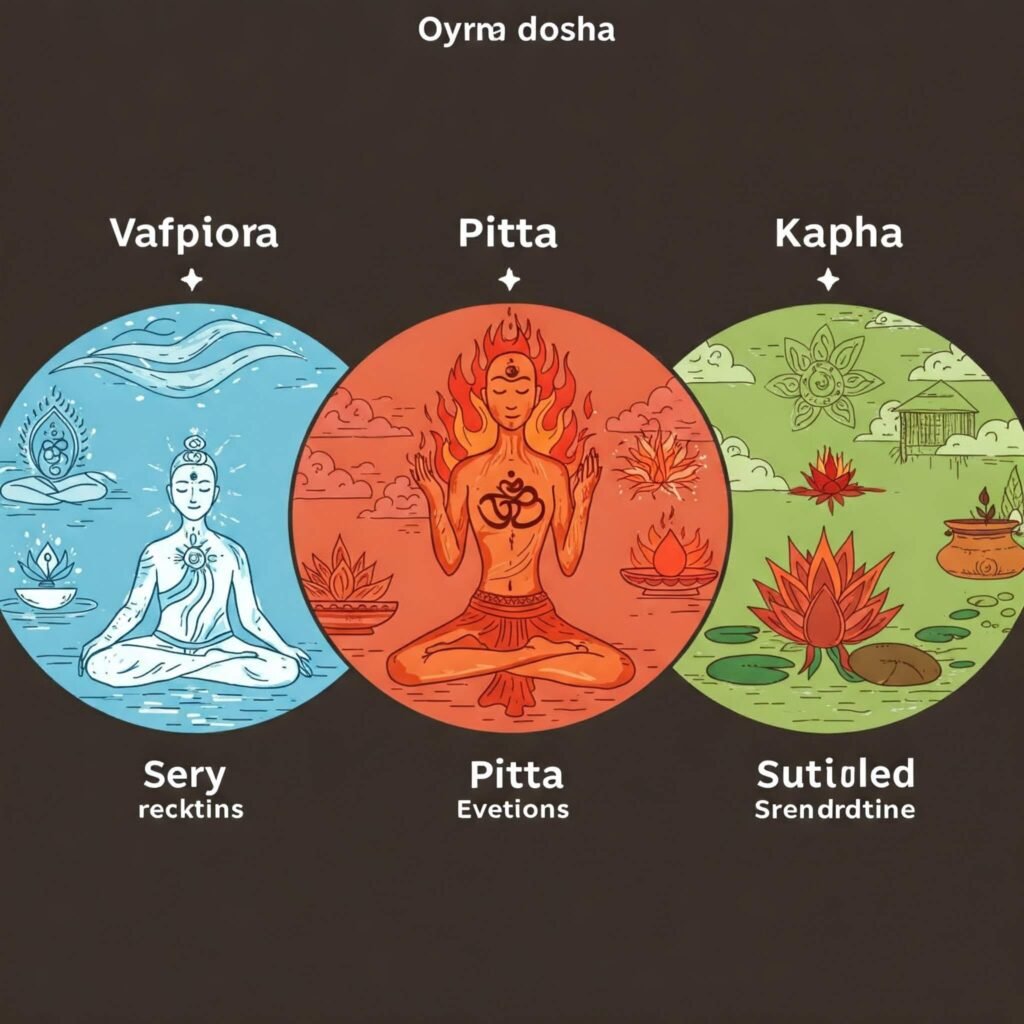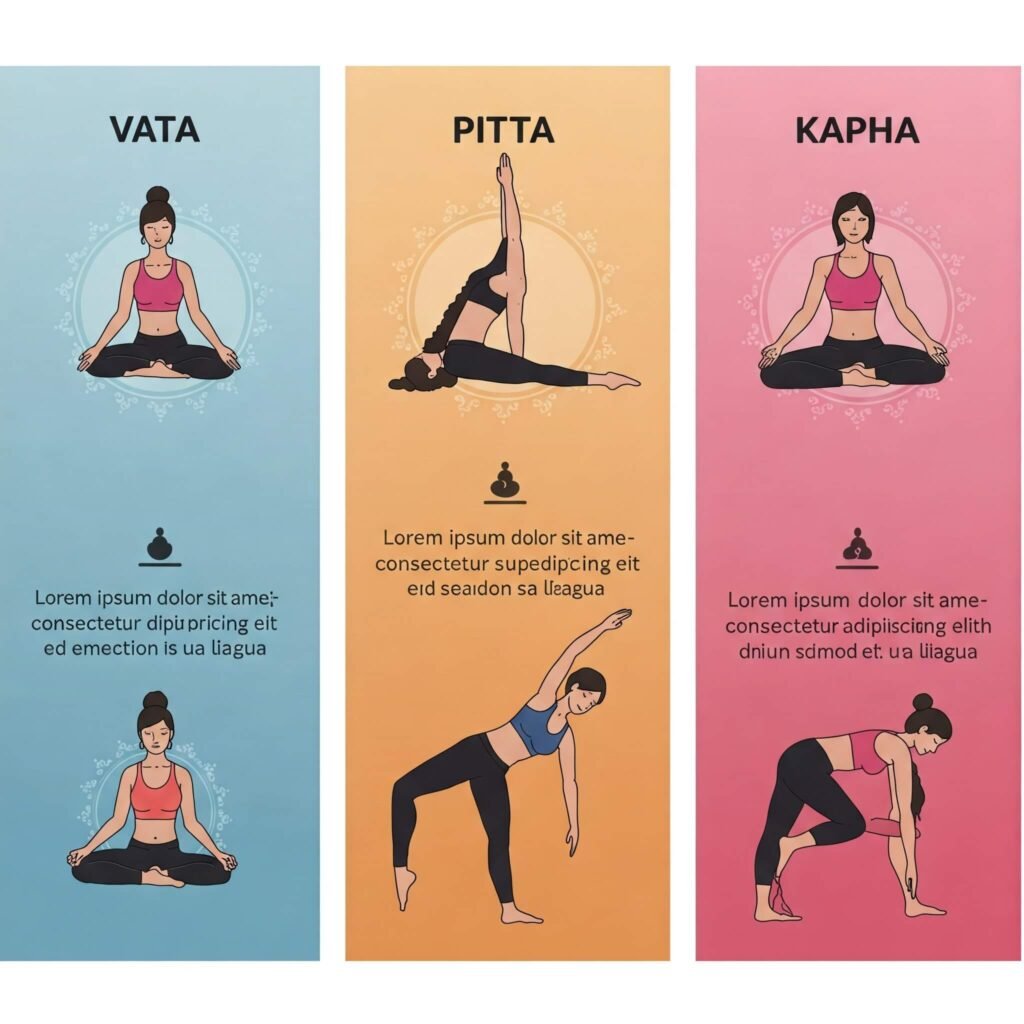Yoga, a practice rooted in ancient Indian philosophy, offers a holistic approach to physical and mental well-being. When combined with the wisdom of Ayurveda, this powerful practice can be further personalized and optimized for individual needs. Customized Yoga Routines Based on Ayurvedic Dosha Types recognizes that each person has a unique constitution (dosha) – Vata, Pitta, or Kapha – and that a tailored yoga practice can help balance these energies and promote overall health.
Understanding Your Dosha: The Foundation of Customized Yoga Routines
In Ayurveda, understanding your predominant dosha is crucial for a personalized approach to health and well-being.
- Vata (Air and Space): Characterized by lightness, dryness, and movement. Vata individuals often benefit from grounding and strengthening practices.
- Pitta (Fire and Water): Associated with intensity, heat, and transformation. Pitta types may benefit from cooling and calming yoga poses.
- Kapha (Earth and Water): Known for stability, heaviness, and slowness. Kapha individuals often benefit from invigorating and energizing yoga poses.

Customized Yoga Routines for Each Dosha
Here are some general guidelines for creating Customized Yoga Routines Based on Ayurvedic Dosha Types:
Vata Dosha:
- Focus: Grounding, strengthening, and calming poses.
- Poses: Forward folds, standing poses like Warrior II and Triangle, and restorative poses like Supported Shoulder Stand.
- Style: Slow-paced, gentle flows with a focus on stability and grounding.
- Modifications: Use props like blankets and bolsters for added support and warmth.
Pitta Dosha:
- Focus: Cooling, calming, and balancing poses.
- Poses: Inversions like Downward-Facing Dog and Shoulder Stand, cooling poses like Wide-Legged Forward Fold, and gentle twists.
- Style: Slow, flowing movements with a focus on breath awareness and relaxation.
- Modifications: Practice in a cool environment and use cooling props like eye pillows.
Kapha Dosha:
- Focus: Energizing, stimulating, and detoxifying poses.
- Poses: Inversions, backbends, and standing poses like Sun Salutations and Warrior poses.
- Style: Dynamic flows with a focus on building heat and increasing circulation.
- Modifications: Practice in the morning or during cooler parts of the day.
Beyond Asanas: Pranayama and Meditation for Dosha Balance
Customized Yoga Routines Based on Ayurvedic Dosha Types extend beyond physical postures. Pranayama (breathwork) and meditation are integral components of a holistic yoga practice.
- Vata: Calming pranayama techniques like Dirga Pranayama (Three-Part Breath) and calming meditations can help balance the nervous system.
- Pitta: Cooling pranayama techniques like Sitali Pranayama (Cooling Breath) and calming meditations with a focus on visualization can help reduce heat and irritability.
- Kapha: Energizing pranayama techniques like Kapalabhati Pranayama (Skull Shining Breath) and stimulating meditations can help increase alertness and focus.

Finding Your Flow: Tips for Creating Your Own Customized Routine
- Start with a consultation: Consider consulting with an Ayurvedic practitioner or a yoga teacher experienced in Ayurvedic principles.
- Listen to your body: Pay attention to how different poses feel and adjust your practice accordingly.
- Experiment and explore: Try different styles of yoga and explore various pranayama and meditation techniques to find what resonates with you.
- Be patient and consistent: Regular practice is key to experiencing the benefits of Customized Yoga Routines Based on Ayurvedic Dosha Types.
Conclusion: Embracing the Uniqueness of Your Dosha Through Yoga
By understanding your dosha and incorporating Ayurvedic principles into your yoga practice, you can create a personalized routine that supports your unique needs and promotes overall well-being. Remember, yoga is a journey of self-discovery, so be patient, listen to your body, and enjoy the process of finding your flow.
Outbound Reference Links:
- Refer to links of reputed Ayurvedic resources or organizations like the National Ayurvedic Medical Association (NAMA) or the World Ayurveda Foundation.


































